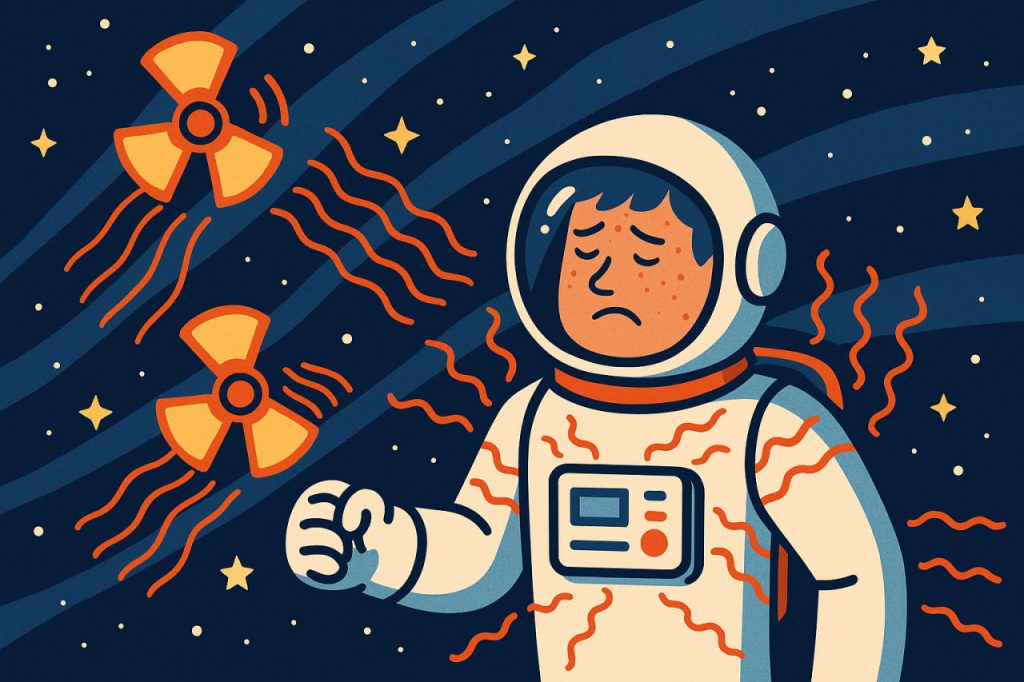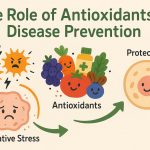Cosmic radiation refers to high-energy particles originating from outer space that travel at nearly the speed of light. These particles include protons, electrons, and atomic nuclei, and they come from the Sun, distant stars, and galactic events like supernovae. On Earth, we are largely shielded from this radiation by the atmosphere and magnetosphere, but astronauts in space are much more vulnerable. Studying the effects of cosmic radiation on the human body is essential for safe space exploration and long-term habitation on other planets.
Sources of Cosmic Radiation
There are three primary sources of cosmic radiation that affect space travelers:
- Solar Particle Events (SPEs): Emitted during solar flares and coronal mass ejections.
- Galactic Cosmic Rays (GCRs): High-energy particles from outside the solar system, constant and difficult to shield against.
- Trapped Radiation Belts: Earth’s Van Allen belts, which contain charged particles held by Earth’s magnetic field.
While Earth’s surface receives only a minimal dose of these, astronauts outside the atmosphere — especially on missions beyond low Earth orbit — receive significantly higher exposure.
How Cosmic Radiation Affects the Human Body
Cosmic radiation can penetrate deep into human tissue, causing ionization of molecules. This can damage DNA, cells, and organs. Some of the known and potential effects include:
- Increased cancer risk: Mutations caused by radiation can lead to various cancers.
- Damage to the central nervous system: Long-term exposure may impair memory, cognition, and behavior.
- Acute radiation sickness: High doses over short periods can cause nausea, fatigue, and blood disorders.
- Degenerative diseases: Accelerated aging, cardiovascular issues, and reduced immune response.
- Vision problems: Astronauts have reported flashes of light caused by cosmic rays interacting with their retinas.
The severity of these effects depends on exposure time, intensity, and protection methods.
Differences Between Earth and Space Exposure
On Earth, we are protected by:
- The magnetic field, which deflects many charged particles.
- The atmosphere, which absorbs much of the remaining radiation.
In space, especially during deep-space missions to the Moon or Mars, astronauts are exposed to much higher radiation levels. A six-month journey to Mars may expose astronauts to radiation doses over 100 times greater than on Earth.
Even the International Space Station (ISS), located in low Earth orbit, provides only partial shielding. Long-term ISS residents must be carefully monitored for radiation effects.
Protective Measures and Current Solutions
To reduce exposure, scientists and engineers are exploring several strategies:
- Shielding materials: Using hydrogen-rich materials like polyethylene, or even water walls, to block or absorb radiation.
- Radiation forecasting: Monitoring solar activity to warn astronauts of upcoming solar storms.
- Mission planning: Limiting time spent in high-radiation zones (e.g., Van Allen belts).
- Underground habitats: For Moon and Mars missions, using regolith (lunar or Martian soil) to build radiation shelters.
- Pharmaceutical countermeasures: Experimental treatments that might help repair radiation-damaged cells.
NASA, ESA, and other space agencies continuously research better protection as missions grow longer and travel farther from Earth.
Why This Research Matters
As humanity prepares for future exploration — Moon bases, Mars colonies, and long-term space habitats — managing radiation exposure becomes a critical factor in mission success. Ensuring astronaut health in space also helps researchers improve radiation treatments and protection methods for people on Earth, such as cancer patients and airline crew members.
Glossary
- Cosmic radiation: High-energy particles from outer space.
- Galactic Cosmic Rays (GCRs): Radiation from outside the solar system.
- Solar Particle Events (SPEs): Bursts of energetic particles from the Sun.
- Ionization: Process where atoms lose or gain electrons due to radiation.
- Van Allen belts: Zones of charged particles trapped by Earth’s magnetic field.
- Radiation shielding: Materials or methods that reduce exposure to harmful radiation.
- Radiation sickness: Illness caused by excessive exposure to radiation.


